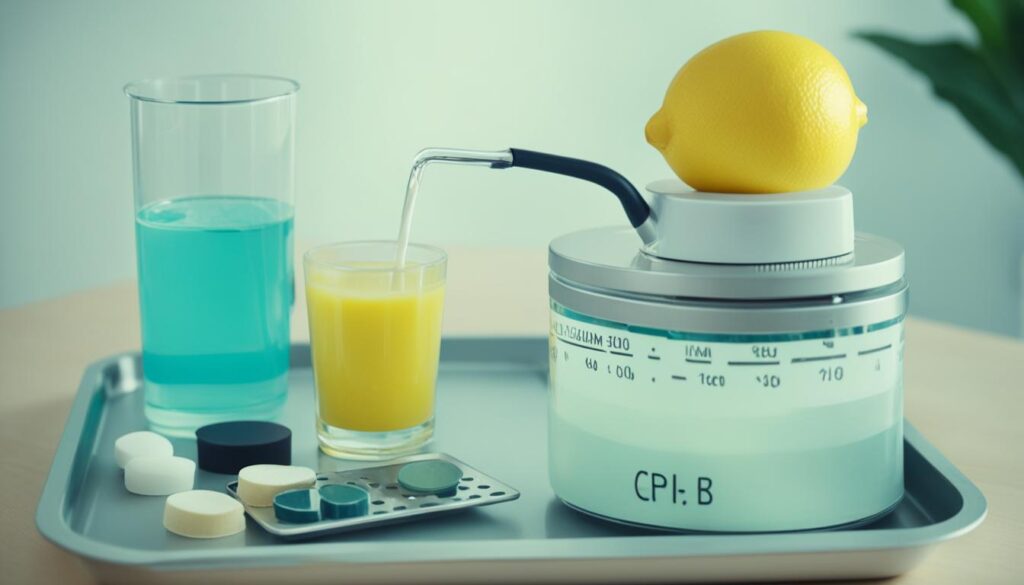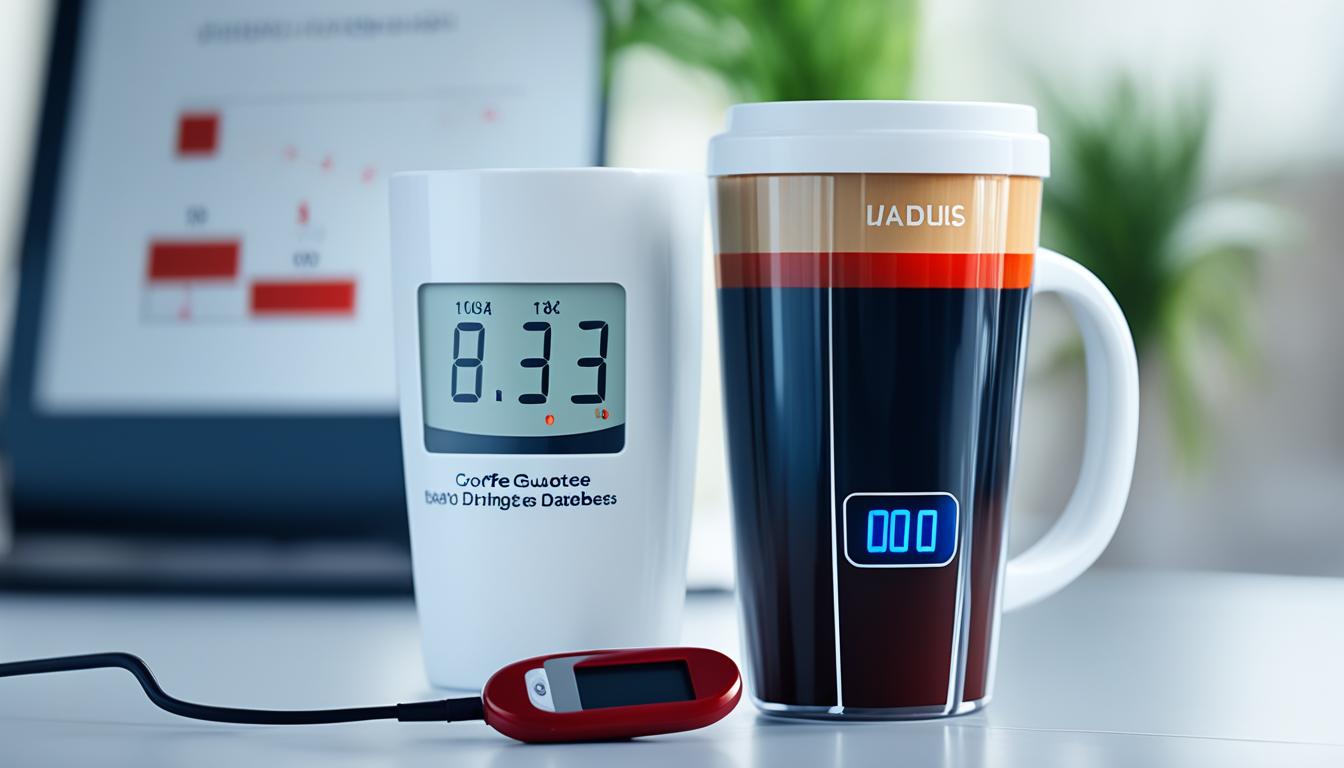Coffee is a beloved beverage enjoyed by millions of people around the world. However, for some individuals, the acidity of coffee can cause discomfort, such as heartburn or digestive issues. If you’re looking to enjoy a smoother cup of coffee and reduce its acidity, we’ve got you covered. In this article, we’ll share five simple tips to help you achieve a lower acid coffee experience without compromising on taste. Let’s dive in!
Key Takeaways:
- Choose low-acid coffee beans, such as dark roasts or those grown in low-acidity soil.
- Experiment with brewing methods like cold brew or using paper filters instead of metal filters.
- Consider adding alkaline milks like almond or soy milk to your coffee.
- Limit your caffeine intake and avoid drinking coffee on an empty stomach.
- Try using low-pH types of sugar or a pinch of baking soda to neutralize acidity.
By incorporating these tips into your coffee routine, you can enjoy a more enjoyable and less acidic cup of joe. Let’s begin our journey to reduce acidity in coffee together!
Understanding the Acidity of Coffee
Coffee is not just about the bold flavors and enticing aromas; it’s also about the acidity that gives it a distinctive character. When we talk about the acidity of coffee, we’re referring to the presence of organic acids such as citric, malic, and quinic acids. These acids contribute to the complex flavors and bright acidity that coffee enthusiasts appreciate.
However, not all coffee acids are created equal. One acid, in particular, quinic acid, can continue to be released as brewed coffee sits, resulting in a bitter taste over time. Understanding the different types of coffee acids and their behavior can help us better manage the overall acidity of our brews.
Aside from the presence of natural coffee acids, the roasting process also plays a significant role in determining the acidity of your coffee. Dark roasts are generally less acidic compared to light roasts because the roasting process breaks down the acidity. So, if you prefer a less acidic cup, opting for darker roasts might be the way to go.
When it comes to determining the acidity of coffee, we use the pH scale, which ranges from 0 to 14. A pH level below 7 indicates acidity, while a pH level above 7 indicates alkalinity. Coffee typically falls within the range of 4 to 5 on the pH scale, making it slightly acidic.
Understanding the acidity of coffee and its factors can empower us to make informed decisions when it comes to choosing the right beans, roasts, and brewing methods. Let’s delve deeper into the world of coffee acidity and discover how we can create a harmonious balance in our brews.
Tips for Choosing Low-Acid Coffee
If you’re looking to reduce the acidity in your coffee, we have some helpful tips for you. By making smart choices when selecting your coffee, you can enjoy a less acidic cup without compromising on flavor. Here are a few suggestions:
- Opt for Dark Roasts: Dark roasts generally have a lower acid profile compared to lighter roasts. The longer roasting process helps break down some of the acids, resulting in a smoother and less acidic taste. So, when shopping for coffee, look for dark roast options.
- Consider Decaffeinated Coffee: Decaffeinated coffee is a great choice if you’re sensitive to acidity. Caffeine can increase stomach acid production, so by choosing decaf, you’ll naturally reduce acidity levels. Plus, many decaf varieties are specifically processed to remove excess acids.
- Explore Low-Acid Varieties: Certain coffee varieties are grown in low-acidity soil, which translates to naturally lower acidity levels in the beans. For example, coffee from Brazil and Indonesia is known to be less acidic. Look for brands that source their beans from these regions or specifically market themselves as low-acid options.
- Try Alkaline Coffee: Another option to consider is alkaline coffee. These specially formulated blends have been designed to be less acidic, making them gentler on your stomach. Look for brands that offer alkaline coffee options, as they’ve crafted their blends to have a balanced pH level.
By following these tips, you can find the best low-acid coffee brands and explore alkaline coffee options that suit your taste preferences. A less acidic brew can help prevent discomfort and allow you to fully enjoy your daily coffee ritual.

“Choosing the right coffee can make all the difference when it comes to reducing acidity levels. With our tips, you’ll be able to enjoy a smooth and flavorful cup without the unwanted acidity.”
Brewing Methods to Reduce Acidity
The brewing method you choose can significantly impact the acidity of your coffee. To enjoy a less acidic cup of coffee, consider trying the following brewing methods:
- Cold Brew Coffee: Steep coffee grounds in cold or room-temperature water for 12-24 hours to create a smooth and low-acid brew. Cold brewing extracts fewer acids from the coffee, resulting in a milder flavor.
- Fine Grind: Use a fine grind when brewing your coffee. Finely ground coffee beans provide a larger surface area for extraction, which can help reduce acidity.
- Paper Filters: Opt for paper filters instead of metal filters. Paper filters are better at trapping oils and sediments, which can contain acidic compounds, resulting in a less acidic cup of coffee.
- Additional Water: Add more water to your coffee when brewing. Diluting the coffee with water can help lower its acidity.
Experiment with these brewing methods to find the one that suits your taste preferences and creates the least acidic coffee for you.
“Cold brewing extracts fewer acids from the coffee, resulting in a milder flavor.”
Tips for Easier Digestion
If you’re prone to digestive issues or acid reflux, we have some helpful tips to make your coffee easier to digest. By following these acid-free coffee tips, you can enjoy your favorite brew without discomfort:
- Avoid drinking coffee on an empty stomach: Before enjoying your cup of coffee, try having a small snack or meal to create a more balanced environment for digestion.
- Limit your caffeine intake: Excessive caffeine can increase stomach acid production, leading to digestive discomfort. Consider opting for decaffeinated coffee or reducing the number of cups you consume.
- Choose alkaline milks: Instead of using dairy milk, which can be more acidic, try alternatives like almond or soy milk. These options are alkaline and can help neutralize the acidity of your coffee.
- Use low-pH types of sugar: If you prefer sweetening your coffee, opt for low-pH sugars like organic cane sugar or coconut sugar. These can help reduce the overall acidity of your beverage.
- Add baking soda in moderation: A small amount of baking soda can help neutralize the acidity of your coffee. Remember to use it sparingly as too much can alter the taste of your brew.
Remember, everyone’s digestive system is different, so it’s essential to listen to your body and adjust accordingly. These tips can help minimize the impact of coffee acidity on your digestive system.
Try incorporating these suggestions into your coffee routine to enjoy a smooth and comfortable coffee experience.

| Tips for Easier Digestion |
|---|
| Avoid drinking coffee on an empty stomach |
| Limit your caffeine intake |
| Choose alkaline milks |
| Use low-pH types of sugar |
| Add baking soda in moderation |
Conclusion
Reducing acidity in coffee can be a simple and enjoyable process. By choosing low-acid coffee beans, adjusting your brewing methods, and taking steps to make your coffee easier to digest, you can savor a smoother and less acidic cup of coffee.
Firstly, selecting low-acid coffee beans is essential. Opt for dark roasts, as they have a lower acid profile compared to lighter roasts. Additionally, consider trying decaffeinated coffee, as it contains less caffeine that can increase stomach acid production. Look for brands that specifically offer low-acid or alkaline coffee options, such as [Brand X] or [Brand Y].
Next, experiment with different brewing methods to find what suits you best. Cold brew coffee, made by steeping coffee grounds in cold or room-temperature water, extracts fewer acids and results in a less acidic brew. Alternatively, try using a fine grind, paper filters instead of metal filters, and adding more water to your coffee.
Finally, for those with sensitive stomachs or acid reflux, there are additional tips to make your coffee easier to digest. Avoid drinking coffee on an empty stomach, limit your caffeine intake, and opt for alkaline milks like almond or soy milk. You can even use low-pH types of sugar or a touch of baking soda to neutralize acidity in your coffee.
By implementing these strategies and experimenting with different options, you can enjoy a delightful cup of low acid coffee that minimizes bitterness and acidity, without compromising on taste. Cheers to a smoother coffee experience!
FAQ
Is coffee naturally acidic?
Yes, coffee is naturally acidic, with a pH level of around 5.
How can I reduce the acidity in my coffee?
There are several ways to reduce the acidity in your coffee, such as choosing low-acid coffee beans, adjusting your brewing methods, and making small changes to your coffee routine.
Which acids are present in coffee?
Coffee contains various organic acids, including citric, malic, and quinic acids, which contribute to its taste and aroma.
Does the roasting process affect the acidity of coffee?
Yes, dark roasts generally have a lower acid profile compared to lighter roasts.
What types of coffee have lower acidity levels?
Certain coffee varieties grown in low-acidity soil, such as those from Brazil and Indonesia, naturally have lower acidity levels.
How does the brewing method impact the acidity of coffee?
Cold brew coffee, fine grind, paper filters, and adding more water can all help reduce the acidity of your coffee.
What can I do to make my coffee easier to digest?
You can avoid drinking coffee on an empty stomach, limit caffeine intake, and choose alkaline milks like almond or soy milk as alternatives to dairy milk.
Are there any additional tips to reduce acidity in coffee?
Yes, using low-pH types of sugar or adding a small amount of baking soda to your coffee can help neutralize acidity.
How can I enjoy a smoother and less acidic cup of coffee?
By incorporating these tips, such as selecting low-acid coffee beans, adjusting your brewing methods, and making coffee easier to digest, you can reduce acidity and enjoy a smoother cup of coffee.




